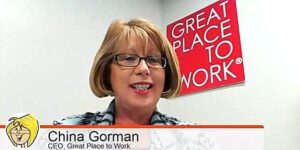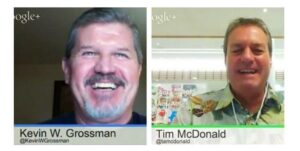
#TChat Recap: The Power Of Workforce Culture And Continuous Mobility
The balance of power is shifting in the employer/employee relationship. What does it mean for the future of work? The #TChat crowd weighs in

The balance of power is shifting in the employer/employee relationship. What does it mean for the future of work? The #TChat crowd weighs in

The balance of power is shifting in the employer/employee relationship. What does it mean for the future of work? The #TChat crowd weighs in

Dan Pink’s book “Drive: the Surprising Truth about What Motivates us” has thrown a major monkey wrench into how we think about motivation. For years it

The TalentCulture #TChat Show is back live on Wednesday, June 4, 2014. #TChat Radio starts at 6:30 pm ET (3:30 pm PT) and the convo continues on #TChat Twitter chat from

“So Beatrice, what are you going to make today?” “Lemonade.” “And what’s the first ingredient?” “Lemons.” “And what’s second?” “Sugar.” “And then what?” “Um…ice.” “Yes,

The balance of power is shifting in the employer/employee relationship. What does it mean for the future of work? The #TChat crowd weighs in

The TalentCulture #TChat Show is back live on Wednesday, May 28, 2014. #TChat Radio starts at 6:30 pm ET (3:30 pm PT) and the convo continues on #TChat Twitter chat from

The balance of power is shifting in the employer/employee relationship. What does it mean for the future of work? The #TChat crowd weighs in

Good Day! I’ll be the guest host this Wednesday, May 21, on the TalentCulture #TChat – show which includes #TChat Radio and #TChat Twitter Chat

Calvin Coolidge once said, “No man ever listened himself out of a job”. As an employee engagement specialist, this quote really resonates with me. Solid

Would you rather think differently than others or differently than you’re used to thinking? Chances are good that doing the second will get you the first.

Long-winded professionals make lousy leaders. You feel no inspiration hearing them tear through another management monologue. You can’t readily recall the most important messages from

There’s a reason most people dread Mondays: They’re notorious catch-up days. You answer the dozens of emails you neglected over the weekend and attempt to

One of the most difficult skills for a young professional is handling money. It’s not about balancing your checkbook or keeping up on student loan payments,

“You got up, and you did something. And if trying to find a way when you don’t even know you can get there isn’t a

We all have unique talents and a purpose. How can we create harmony between these defining characteristics and our professional pursuits?

What sets great employers apart? And what can other organizations learn from the best? Join a timely and important #TChat conversation this week

What can long-distance running teach us about entrepreneurship? Here are 6 ideas from a street-smart young leader

Listening — it can be a powerful tool for business leaders. But developing the habit of mindful listening requires practice. Here are tips to help.

Emotional intelligence is much more than a “soft skills” buzzword. It’s a leadership essential at today’s most successful companies. How can it work for you? Let’s discuss!

How can social learning create a competitive advantage for today’s organizations? Ideas you can use — from this week’s 3rd Anniversary #TChat events

Looking back at the best of #TChat — with gratitude for everyone who brings the TalentCulture community to life

There are many paths in the world of work. But one thing is for sure — with community along for the ride, it’s never lonely!

Can you believe #TChat has been going strong for three years? Time flies on the stream! Let’s talk about the future of social learning and your thoughts on community

Are technology and innovation like love and marriage? If you care about the future of work, look closer at this special relationship